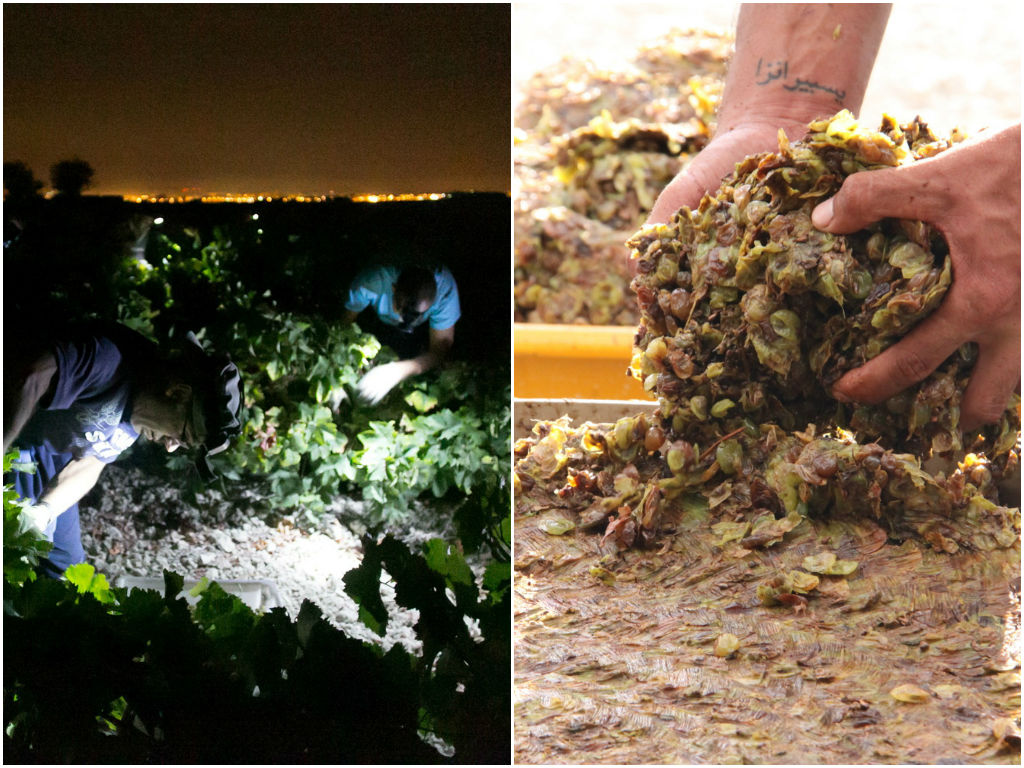I moved to South Western Spain six months ago, when my partner and I realised our love for wine had reached a bizarre and particular pattern of wine dependency. Don’t get me wrong, we are far from suffering any disease, we have been diagnosed with wine love. Andalusia offers a tremendous wine panorama and is full of research projects trying to recover part of the 3,000-year-old viticulture practices introduced by Phoenicians.
And believe me, despite the hard work and physical effort harvest period represents, it is one of the most gratifying moments. I wouldn’t say it is a contradiction but a question of personal identification.
 Photo: Pepín is the foreman at Bodegas Barón in Sanlúcar de Barrameda; he has spent all his life in the vineyards.
Photo: Pepín is the foreman at Bodegas Barón in Sanlúcar de Barrameda; he has spent all his life in the vineyards.
Harvest Guidelines: From the Vines to the Cellar
We couldn’t miss our first harvest in the Sherry Triangle (the first officially recognised winemaking region in Spain), and I recommend you to experience it at least once in your life. 2014 has been a particular hot year, grapes ripened earlier than foreseen and by mid-August a frantic mood invaded the region. The 21st of August all bodegas were ready. Farm labour workers are queuing for days in front of the vineyard foreman; the local society tries to live off the land. Some start harvesting at 7.00 a.m., others prefer to do it by night; in any case the main point is to protect the grapes from heat so that they stay fresh and do not break. It is crucial when you reach 40ºC to preserve the fruit; it has to reach the winery in the best conditions. The minimum alcohol degree accepted by the appellation D.O. Jerez-Xérèz-Sherry is 10,5 % vol.
The cutting process is another significant aspect. It is true that in the sixties sherry wines faced a massive mechanization and production attained extreme limits, quality fell down dramatically and sixty years later the whole region fights for regaining the reputation of some of the best worldwide wines. But nowadays, a group of wine intellectuals are moving back to old procedures, they are going back to the field, they are paying attention again to the vineyards. Scissors and baskets are the sole tools. Technique and personal skills make the rest. We have to cut the vine bunch by bunch and carefully leave it on a small basket. Then, when the basket is full, we have to carry the 15kg basket to the truck escorting us. Personally, I cannot carry that much weight and have to go back and forwards more frequently, with the basket only half full.
 Photo: Baskets are heavy but no mechanization is used for the transportation to the truck. Winery: Bodegas Barón
Photo: Baskets are heavy but no mechanization is used for the transportation to the truck. Winery: Bodegas Barón
Back pain, heat, tiredness, but for six hours the rhythm is constant, and a twenty minute breakfast break is enough to see people smiling and singing. As the van is full of grapes, it rolls straight to the lagar, the less time the grapes are heaped, the better; the pressure applied by their own weight causes a high risk of grapes breakage and at temperatures as high as 40ºC the juice would start fermenting out of control. Lagar is the name of the vat for freshly pressed wine and is also used in Andalusia to name the wineries in the vineyards, to distinguish them from the impressive bodegas right in the middle of the cities.
In the lagar the workers are ready at the sorting table to start the manual selection and discard those grapes that might be sick. This is the final step of the manual tasks. Mechanised de-stemming and immediate crushing follow and the very first obtained will be fermented. This is not the end; it is time for Grape Harvest Festivals all over the Sherry Triangle, one of the most important popular events in the agenda of winemaking areas. The show must go on.
 Left photo: Harvesting by night at Bodegas Luis Pérez in Jerez. Right Photo: Smooth crushing of Pedro Ximénez grapes will produce the very best free-run must, called also “flower must”, and only this juice will be used to make the wines from Bodegas Ximénez-Spínola.
Left photo: Harvesting by night at Bodegas Luis Pérez in Jerez. Right Photo: Smooth crushing of Pedro Ximénez grapes will produce the very best free-run must, called also “flower must”, and only this juice will be used to make the wines from Bodegas Ximénez-Spínola.
Try your own Harvest experience with Winerist.